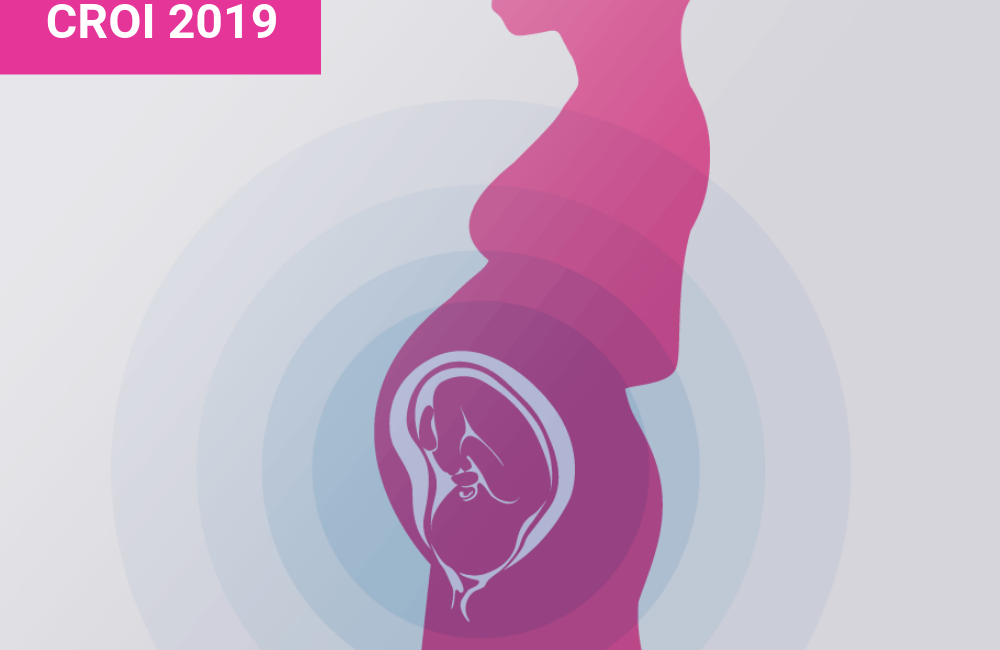
Researchers are still unable to determine if exposure to integrase inhibitors around conception and in early pregnancy increases the risk of neural tube defects in infants, research presented this week at the Conference on Retroviruses and Opportunistic Infections (CROI 2019) shows.
Concerns about the risk were raised in 2018 after a higher rate of neural tube defects was observed in infants exposed to dolutegravir around conception and in the first three months of pregnancy in a prospective study in Botswana. The Tsepamo study compared birth outcomes in infants exposed to dolutegravir or to other antiretroviral regimens. Preliminary results showed a prevalence of 0.94% in infants born to women taking dolutegravir at the time of conception, compared to a prevalence of 0.05% in women taking efavirenz.
This finding led the World Health Organization to issue guidance recommending that women of childbearing potential should be provided with effective contraception if taking dolutegravir. Numerous African countries have paused plans to roll out dolutegravir as the preferred option for adult antiretroviral treatment in women as they wait for further information on the potential risk.
Researchers are now checking whether this safety signal represents an increased risk or whether these cases were a local anomaly or due to chance.
Further reports on the prevalence of neural tube defects in infants exposed to antiretroviral drugs were presented at CROI.
No signal in French national cohort
The National French Perinatal Cohort, covering all pregnant women with HIV in 90 centres, reported on 8126 pregnancies between 2008 and 2017, 808 of which were exposed to integrase inhibitors (703 to raltegravir). Of these exposures, 301 occurred at the time of conception, 183 as a first-line regimen initiated during pregnancy and 324 as a second-line initiated during pregnancy. Each of these groups was matched with a control group of pregnant women not exposed to integrase inhibitors. Investigators found no significant difference in birth defects, stillbirths, pre-term births or any other adverse birth outcome in the three integrase-inhibitor-exposed groups, nor any significant difference in any adverse birth outcome between exposed and unexposed pregnancies. (Sibiude)
Merck reported on the prevalence of neural tube defects in infants born to women exposed to raltegravir at the time of conception or during pregnancy. Merck received 803 reports on women taking raltegravir in clinical trials or post-marketing (37% periconception or first trimester). No neural tube defects were reported. (Shamsuddin)
A study of 69,766 births at four major hospitals in Uganda, between August 2015 and December 2017, 9.6% to mothers with HIV, found no difference in risk of neural tube defects between infants born to mothers without HIV and infants exposed to HIV. Seventy-one infant neural tube defects were reported, a prevalence of 10.5 per 10,000 live births in HIV-unexposed infants and 7.4 per 10,000 live births in HIV-exposed infants. Neural tube defects were not associated with antiretroviral therapy. This study could not report on any association with dolutegravir as it was not available during the period studied. The recommended regimen in Uganda during this period was tenofovir, lamivudine and efavirenz. (Barlow-Mosha)
Limitations of existing surveillance systems
A review of cases of antiretroviral drug exposure reported to the Antiretroviral Pregnancy Registry found no cases of neural tube defects associated with integrase inhibitor exposure at conception or in the first trimester up to 31 July 2018 in pregnant women followed prospectively. The Registry held details of 1301 exposures (688 periconception, 150 in the first trimester and 461 in the second or third trimester), of which 401 were to dolutegravir, 294 to elvitegravir and 656 to raltegravir. Seven neural tube defects have been reported to the registry retrospectively (i.e. after birth), of which five are known to be associated with periconception exposure to raltegravir or dolutegravir. The study authors say that the number of pregnancies with periconception exposure reported to date is insufficient to rule out an increased risk and appealed to healthcare providers to report details of patients. (Albano)
Another research group attempted to untangle duplicate reports to various pharmacovigilance databases established by regulatory agencies. They found 165 cases across four databases containing reports on neural tube defects in women exposed to antiretrovirals during pregnancy, but eventually established that only 44 separate neural tube defects had been reported, with no information on the total number of exposures of pregnant women (the denominator). Andrew Hill and colleagues warned that current pharmacovigilance databases are not a reliable mechanism for monitoring the risk of neural tube defects and that prospective studies like the Tsepamo study of dolutegravir introduction in Botswana are needed for a wide range of antiretrovirals. Pregnant women should also be recruited into phase 3 licensing studies wherever possible, they say. (Hill)
Lynn Mofenson warned that surveillance data on birth defects must be treated carefully. Studies come from many different sources including randomised trials, case reports, observational studies and registries. Each of these sources has its own recruitment and treatment assignment biases, which may exaggerate or underestimate the risk. Registries of birth defects lack information on the total number of women exposed to the drug, and across the board, there is difficulty in distinguishing between cases that occur associated with exposure at conception or in the first trimester. In the case of neural tube defects, it is important to know whether the case occurred in a country where food is fortified with folate or where supplementation takes place, and to know the background rate in the population. Lynn Mofenson pointed out that of the 174 cases of dolutegravir exposure reported to the Antiretroviral Pregnancy Registry, most are from countries where food is fortified with folate, which reduces the prevalence of neural tube defects.
She noted that the median prevalence of neural tube defects in the general population in eight African countries was 0.12%, which is similar to the level seen in the Ugandan study presented at CROI (see above). In that study, the prevalence in infants born to mothers with HIV was 0.07%, in line with the prevalence reported in Botswana in infants exposed to antiretrovirals other than dolutegravir.
Further data from the Tsepamo study will be available later in 2019 when data on at least 1400 pregnancy outcomes should be available. If no new defects are reported in that study, the statistical likelihood is that dolutegravir is not associated with an increased risk of neural tube defects. But if additional cases are reported it will become necessary to accumulate data on the outcomes of many more pregnancies – up to 2500 according to modelling published last year – before researchers can advise that dolutegravir does not increase the risk of neural tube defects.
Albano J et al. Integrase inhibitor exposure and CNS and neural tube defects: data from the Antiretroviral Pregnancy Registry. Conference on Retroviruses and Opportunistic Infections, Seattle, abstract 747, 2019.
View the abstract on the conference website.
Barlow-Mosha L et al. Neural tube defects, HIV and antiretrovirals – birth defect surveillance in Uganda. Conference on Retroviruses and Opportunistic Infections, Seattle, abstract 743, 2019.
View the abstract on the conference website.
Hill A et al. Reports of neural tube defects for 8 ARVs in FDA, WHO, EMA and UK pharmacovigilance safety databases. Conference on Retroviruses and Opportunistic Infections, Seattle, abstract 746, 2019.
View the abstract on the conference website.
Shamsuddin H et al. Evaluation of neural tube defects after exposure to raltegravir during pregnancy. Conference on Retroviruses and Opportunistic Infections, Seattle, abstract 745, 2019.
View the abstract on the conference website.
Sibiude J et al. No increase in birth defects in infants exposed to integrase inhibitors at conception. Conference on Retroviruses and Opportunistic Infections, Seattle, abstract 744, 2019.
View the abstract on the conference website.
Mofenson LM. Update on antiretroviral drugs and birth defects. Conference on Retroviruses and Opportunistic Infections, Seattle, presentation 59, 2019.
View the abstract on the conference website.
Watch the webcast of this presentation on the conference website.

